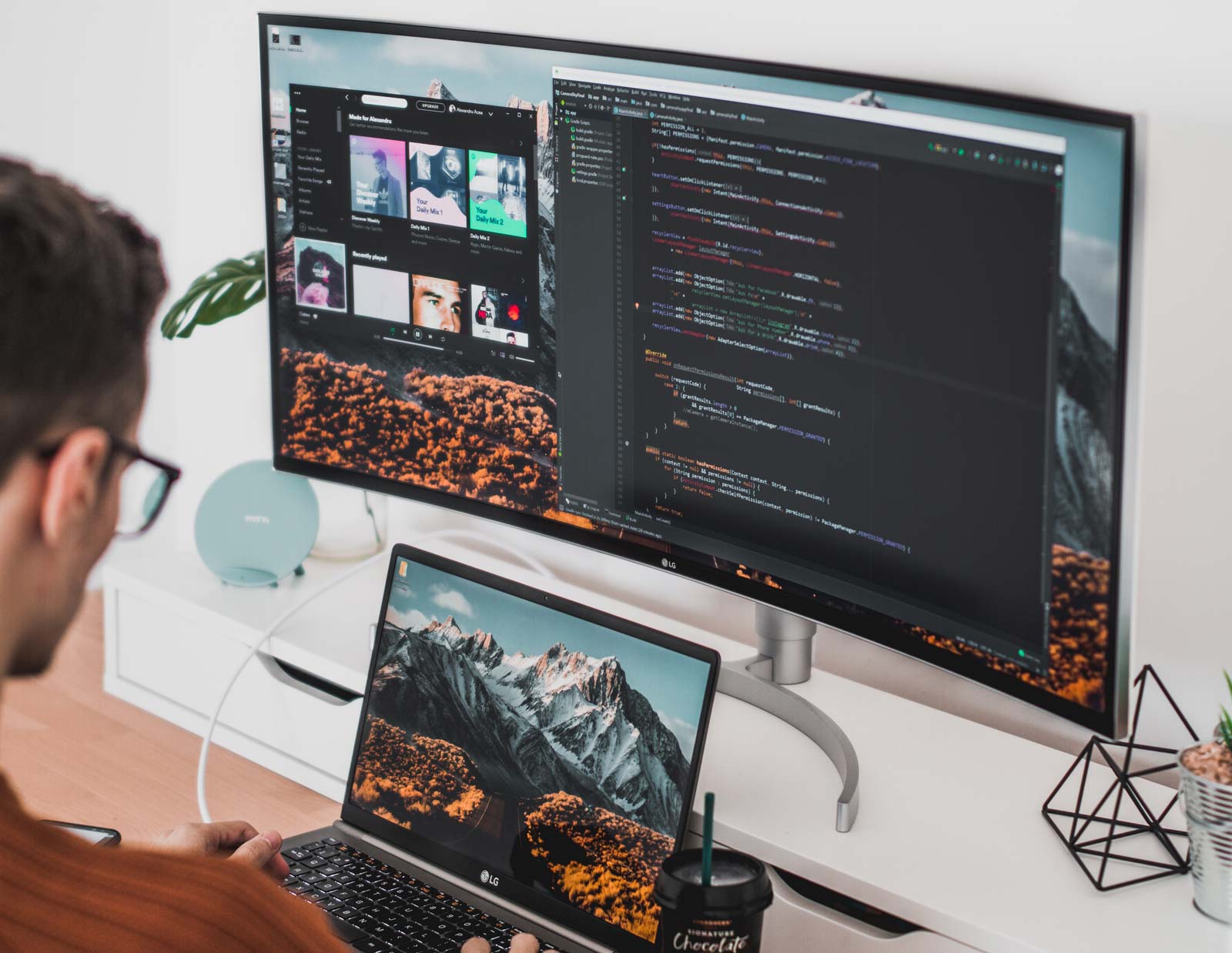4K monitors have become more and more accessible in recent years, with some models selling for just around $300 or less. While they are not exactly as cheap as budget 1080p monitors, there is a good selection of budget 4K monitors on the market. They are great options for those who have a limited budget and simply want a basic monitor with not much bells and whistles.
If you are in the market for the best budget 4K monitors, this guide is for you. In this guide, you’ll find the top 10 products currently out. Although some are clearly designed for gaming use, most of the products listed here are good for all-around use and will make for good displays for both productivity and entertainment. All products included here sell for less than $400, with many of them selling for just around $300-350. A 24-inch display, the LG 24UD58-B is one of the cheapest 4K monitors on the market. You can get it for just around $250, with the larger 27-inch model selling for about $50 more. It’s an IPS monitor with a 60 Hz refresh rate and dual HDMI ports for connectivity with gaming consoles. Regarding design, this LG monitor is not going to turn a lot of heads. It has a plain design with fairly thick bezels all around and a simple back panel. For input, it has one DisplayPort and two HDMI ports, all of which can support the full 4K resolution at 60 Hz. However, the FreeSync feature is limited to the former input port, which is bad news for those who game on Xbox One X.The 24UD58-B is a great monitor for gaming, featuring a fast response time for an IPS panel and a low input lag, both of which are beneficial in gaming. The overall picture quality is good for a budget 4K display, with great color accuracy and wide viewing angles. You can also use it for office work, which makes it a solid option if you want an all-around 4K monitor. If you want a cheap 4K monitor more suitable for productivity than the small LG monitor above, check out the Philips 276E8VJSB, which usually sells for a similar price. It’s a 27-inch IPS monitor with a 60 Hz refresh rate and a regular 16:9 aspect ratio. It can connect with two different input sources and supports Picture-in-Picture (PIP) and Picture-by-Picture (PBP) modes, which is great for productivity. Compared to the LG product above, this Philips offering has a slightly more attractive design, featuring thin bezels at three sides, which is great if you plan to build a multi-monitor setup. All connection ports are outward-facing at the back, making them easy to access. The input ports include one DisplayPort and a pair of HDMI ports, all of which support a 3840×2160 resolution at 60 Hz. While there are no USB ports on this unit, there is an audio out port for headphones. The default stand easily supports the monitor, but it has limited adjustment options. The 276E8VJSB is an ideal monitor for productivity, offering better screen real estate than smaller 4K monitors, which is great for multitasking. It works well in a typical office environment with a lot of light sources, thanks to the anti-glare screen coating and the good peak brightness. You can use it for different kinds of work, including photo editing, content writing, and web development. Selling for just around $300, the Monoprice 34711 is an affordable 4K monitor with a TN panel, which separates it from the previous two products. It’s a 28-inch display with FreeSync and HDR support, the latter of which isn’t usually featured in budget monitors. It’s a decent monitor for all-around use, but it has inferior picture quality compared to IPS monitors. This Monoprice display has a plain design and will look good on just about any office or gaming desk. It has a pair of built-in speakers, which fire out from the back. While the internal speakers are not as good as headphones, they are acceptable for general use, but for entertainment, it’s much better to use a dedicated sound system. Featuring two HDMI ports and two DisplayPorts for input, this budget 4K monitor is decent enough for office work, with the large screen allowing for easy multitasking. It has a decent picture quality for a TN panel, with good color accuracy once calibrated. Although it supports HDR content, it’s not that great regarding HDR performance, which can also be said for most HDR monitors. Overall, this monitor is a solid option if you want a budget 4K monitor selling for around $300 or less. The Asus VP28UQG is a 28-inch TN monitor with dual HDMI inputs, which makes it an excellent budget monitor for console gaming. While it normally sells for around $300, you can get it for just around $250 during a sale, which is great. It’s best used for gaming, as the TN panel can be a limiting factor when using the monitor for office work. Unlike monitors under the Asus Republic of Gamers brand, this product has a plain design, with none of those flashy aesthetics seen in the Asus ROG Swift PG27UQ. It has fairly thick bezels at all sides and comes with a fixed stand with limited ergonomics. On the bright side, it has a small joystick for menu control, which is more intuitive than the physical buttons usually seen in monitors. For video input, the monitor has one DisplayPort and two HDMI ports, with the latter also capable of supporting a 4K resolution at 60 Hz. The VP28UQG is a great monitor for gaming. It’s got a fast response time and a low input lag and supports FreeSync over DisplayPort. It’s a suitable monitor for first-person shooters, racing games, real-time strategy games, and sports games, among others. The overall picture quality is decent at best, though, which is the best-case scenario for a TN monitor. The LG 27UL500-W is similar to the LG 27UK650-W – one of the best 4K monitors currently out on the market – offering similar specifications and features. The biggest difference between them is the stand design: the former only offers tilt adjustment while the latter has height adjustment, tilt, and pivot options. Like the more expensive 27UK650-W, the 27UL500-W has a minimalist design similar to that of most other LG monitors, with narrow bezels at three sides and a plain white back panel. All ports are outward-facing at the back, which makes them easy to access. The input ports include one DisplayPort and two HDMI ports, all of which support a 3840×2160 resolution at the max refresh rate (60 Hz). This LG monitor is good for all-around use. It has good overall picture quality, with great color accuracy, wide viewing angles, and good brightness. You can use it for both office work and regular gaming – the large screen is suitable for multitasking while the 4K resolution translates to sharper texts and more detailed images. It has FreeSync support as well, which is great if you mostly play graphically intensive games at max or near-max settings. Whether the monitor is connected using DisplayPort or HDMI, the FreeSync range is the same, which is 40-60 Hz. The 27UL500-W also supports HDR content, but as with most other HDR monitors, the HDR performance is unimpressive. Overall, this LG unit is a great product and is one of the best options if you want a 4K monitor selling for around $350. If you like the Asus VP28UQG but prefer a unit with better ergonomics, check out the Asus MG28UQ – a gaming monitor selling for around $50 more. It uses the exact same panel and offers similar gaming performance, featuring a fast response time, a low input lag, and FreeSync support. A 28-inch TN monitor, this Asus product is not that different compared to the cheaper VP28UQG when it comes to the chassis design. It has a simple design, with multiple connection ports and a joystick for navigating the on-screen display (OSD). The default stand, which has integrated cable management, offers full adjustment options – including swivel and pivot. For input, the MG28UQ has one DisplayPort and three HDMI ports. Of the three HDMI ports, only one is HDMI 2.0; the others are HDMI 1.4, which is limited to a 30 Hz refresh rate when running in 4K resolution. Unlike most budget 4K monitors, this unit has a USB hub, which is convenient. Composed of two USB down ports, the USB hub is down-firing at the back, along with all the other ports. The MG28UQ is a good 4K gaming monitor. It’s great for fast-paced games, with FreeSync keeping things smooth when the frame rate is erratic. On the other hand, the picture quality is only decent at best, similar to the VP28UQG. If you want a budget-friendly 4K gaming monitor that comes with a fully adjustable stand and a USB hub, go for this Asus monitor The Dell P2415Q is a 24-inch IPS monitor that’s more suitable for office work than gaming, featuring multiple input options and a USB hub. You can get it for around $350, which makes it more affordable than the Dell U2718Q, one of the best 4K monitors from Dell. As expected from a professional monitor, the P2415Q has a minimalist design that will look good in a typical office setting. It comes with a fully adjustable stand with integrated cable management, which is a common setup among Dell office monitors. Of the products listed in this guide, this unit offers the best connectivity, featuring one HDMI port, one DisplayPort, one Mini DisplayPort, one DisplayPort Out, one audio out, and four USB ports. The Mini DisplayPort is useful if you want to connect the monitor to a compatible laptop or notebook while the DisplayPort Out is for daisy chaining. Sadly, the HDMI port is only HDMI 1.4, which means it can’t support the full resolution at the max refresh rate. Featuring good out-of-box color accuracy, the P2415Q is a great monitor for office work. It has wide viewing angles, good brightness, and decent contrast for an IPS panel. While not as good as the gaming monitors on this list, it’s also a decent monitor for regular gaming – it has a good response time and input lag. All in all, the P2415Q is a well-rounded 4K monitor, offering good overall picture quality and decent gaming performance. The LG 32UD59-B is a 32-inch VA monitor with FreeSync support and dual HDMI ports. It’s a good monitor for both productivity and entertainment, with its high contrast ratio being especially beneficial for the latter. It sells for about the same price as the Asus MG28UQ and the Dell P2415Q, which makes it another good option if your budget is limited to around $350. Like the other LG monitor on this list, the 32UD59-B has a simple design, but it has a black back panel instead of white, as hinted by the “B” in the model name. The default stand, which has a crescent-shaped base, has limited ergonomics, only offering height and tilt adjustments. Composed of one DisplayPort, two HDMI ports, and one audio out, the connection ports are outward-facing on the back panel, right next to the VESA mounting interface. This LG monitor is great for regular gaming and watching movies – the large screen makes for a more immersive experience while the high contrast ratio translates to more vibrant images. It has a fast response time for a VA monitor and a low input lag. You can also use this monitor for general office work, which makes it an all-around 4K monitor. Overall, the 32UD59-B is a great product, offering good value for the money. It has good overall picture quality, with good color accuracy and decent brightness, and even includes built-in speakers, which is a nice bonus. Passionate gamers might be interested in our list of the best monitors for PS4. Check them out. Selling for about the same price as the LG 32UD59-B, the Samsung U32J590 is another great option if you prefer VA monitors due to their higher contrast ratio. It’s a 32-inch monitor with a 60 Hz refresh rate and a 16:9 aspect ratio. You can use it for productivity and gaming, with the monitor offering features beneficial for both usages. Unlike many Samsung monitors, the U32J590 does not feature a curved screen, which translates to a thinner chassis. It has a plain design, with an all-black back panel featuring a separate compartment for the connection ports. The ports include one DisplayPort, two HDMI ports, and one audio out port, all of which are down-firing at the back. The monitor comes with a basic stand with limited ergonomics, only offering a tilt adjustment. The U32J590 is a good monitor for productivity, especially if you usually work with multiple windows open at the same time. It supports Picture-by-Picture (PBP) and Picture-in-Picture (PIP) modes and works well in a room with a moderate amount of light. It has decent gaming performance as well, with a good response time for a VA panel and FreeSync support for minimal screen tearing. It’s a good product overall and is a recommended option if you want a VA monitor suitable for all-around use. Here are some of the top-selling ultrawide monitors on the market, as well. Check them out. If you want a VA monitor with a fully adjustable stand and a USB hub, the AOC U3277PWQU is the best option among the VA monitors in this guide. It has the same screen size, refresh rate, and aspect ratio as the LG and Samsung VA monitors above. While it’s the most expensive product listed here, this AOC unit still sells for less than $400. The U3277PWQU has a professional design, featuring a clean back panel and a simple stand with a rectangular base. It has built-in speakers, which is a nice bonus, but they are only good for general use and are not recommended for entertainment. The default stand offers height adjustment, tilt, swivel, and pivot options, with good adjustment ranges. Of the best budget 4K monitors in this guide, this AOC product has the second-best connectivity, right behind the Dell monitor. For input, it has one DisplayPort, one HDMI port, one DVI port, and one VGA port, with 4K at 60 Hz output limited to the former two ports. In addition, the monitor has one audio out, one mic in, and a total of four USB down ports, one of which supports fast charging. The video input and audio ports are down-firing at the back while the USB ports are on the monitor’s right side for quick access. The U3277PWQU is a suitable display for office work and watching movies. It has good picture quality, with excellent contrast, good color accuracy, and decent brightness. The large screen and 4K resolution allow for easy multitasking and more immersion. It’s also a decent monitor for regular gaming, but if you are into fast-paced competitive games, it’s not a recommended option. For more amazing options like this, check out our guide to the top g-sync monitors. Buyer’s Guidelines From the screen size and the panel type, there are several aspects to consider when shopping for 4K monitors. Here are some pointers to keep in mind when shopping specifically for budget 4K monitors: Screen Size When shopping for the best cheap 4K monitors, one of the first things you’ll notice is that most options are 24-inch and 27-inch/28-inch monitors, with limited representation from monitors larger than 30 inches, which is considered the ideal size category for a 3840×2160 resolution. Smaller 24-inch 4K monitors are good options if you have limited space. They look good when you sit less than three feet from the screen and are good for all-around use. But due to their more limited screen space, they are not the best for multitasking, and they don’t offer an immersive experience when used for gaming and watching movies. Larger 27-inch/28-inch 4K monitors are versatile displays that look great whether you sit close to the screen or from around three feet out. They strike a nice balance between screen real estate and desk footprint and are great for both office work and gaming. Since they offer more screen space, they are more suitable for multitasking than smaller 24-inch displays. Furthermore, they are more suitable for games with pretty graphics – such as Hellblade: Senua’s Sacrifice and Far Cry 5. If you want a 4K monitor larger than 30 inches, check out 32-inch 4K monitors, which usually sell for a higher price than their smaller counterparts. They are excellent for productivity, with their generous screen space allowing for easy management of multiple open windows. They are also great for gaming, most especially if you love to play games with gorgeous visuals. On the other hand, they take up more desk space and can be uncomfortable to use if you sit less than three feet from the screen. Panel Type 4K monitors with an IPS (In-Plane Switching) panel are the best for all-around use. They have good color reproduction and offer the best viewing angles. They are the most recommended for productivity and general use and are great for regular gaming. On the other hand, IPS monitors have subpar contrast and are usually the most expensive. While they are not as common as IPS monitors, there are also 4K monitors that use VA (Vertical Alignment) panel technology. They are great for entertainment, with their superior contrast translating to more vibrant images, which is beneficial in games and movies. They are decent enough for office work, but their narrow viewing angles could be a problem for some people. Cheap 4K monitors with a TN (Twisted Nematic) panel are also uncommon, with not much screen sizes to choose from. They are usually the cheapest and feature fast response times, which is beneficial when playing fast-paced games. On the flip side, they have inferior picture quality and are not ideal for productivity, most especially for color-critical work. TN monitors are best used for pure gaming, but only if you mostly play fast-paced games and care more about response times than picture quality. Refresh Rate You don’t really have a choice regarding the refresh rate of budget 4K monitors. All products on the market simply feature a 60 Hz refresh rate. 4K monitors with a refresh rate higher than 100 Hz – which is excellent for serious gaming – are way out of the budget territory, with current models that fit that description selling for a significantly higher price. For productivity and general use, 60 Hz is more than enough. For console gaming, 60 Hz is also perfectly fine, as console games typically don’t go past 60 frames per second. If you want higher refresh rates specifically for gaming, go for 1080p or 1440p monitors instead. Some 4K monitors also feature FreeSync, an adaptive synchronization technology developed by AMD. With FreeSync enabled, the monitor refresh rate dynamically adapts to the graphics card output for reduced screen tearing and smoother gaming. It’s great when playing graphically intensive games at very high settings, which puts more strain on the graphics card. If you are going to use your monitor mainly for gaming, consider budget 4K monitors with FreeSync support. If you want a cheap 4K monitor with G-Sync – the adaptive synchronization technology from the green team (Nvidia) – then you are out of luck, as there are no products that fit that description. This isn’t surprising since “G-Sync” and “cheap” don’t really go hand in hand. The good news is that there are some FreeSync monitors that also allow for variable refresh rates when connected to certain Nvidia graphics cards, commonly referred to as “G-Sync Compatible” monitors. If you own an Nvidia video card and want to use adaptive sync technology, look into 4K monitors that have been tested (either officially or unofficially) as “G-Sync Compatible.” Connectivity Most budget 4K monitors include a DisplayPort and an HDMI port for input. For the former, the most common version featured is DisplayPort 1.2, which can fully support a 3840×2160 resolution at the maximum refresh rate (60 Hz). While there are some 4K monitors that include the newer DisplayPort 1.4, the older DisplayPort 1.2 is more than good enough for budget 4K monitors, which are typically capped out at 60 Hz. If you want to connect using an HDMI cable – like when connecting the monitor to PS4 Pro and Xbox One X consoles – make sure the monitor has an HDMI 2.0 port. Unlike the older HDMI 1.4, HDMI 2.0 can fully support a 4K resolution at 60 Hz. If you connect via HDMI 1.4, the refresh rate will be limited to 30 Hz, which is not good. As mentioned earlier, some monitors feature FreeSync technology. Unlike G-Sync, FreeSync is not limited to DisplayPort. Some FreeSync monitors also allow for variable refresh rates when connected via HDMI, although manufacturers don’t always mention it in product listings. FreeSync over HDMI is most beneficial if you game on Xbox One consoles, which now support FreeSync. Regarding extra ports (e.g. USB hub, audio out), cheap 4K monitors usually don’t offer much, with most models only including an audio port for headphones. This is especially true for budget 4K gaming monitors, as evidenced by some of the products listed in this guide. If you want a monitor that offers connectivity options apart from the input ports, you’ll have very limited choices. Ergonomics One of the most common issues of budget monitors is their poor ergonomics, with the default stand of most models only allowing for a tilt adjustment. Sadly, this issue also extends to budget 4K monitors despite being priced higher than cheap 1080p and 1440p monitors. While some offer a fully adjustable stand – such as the Dell P2415Q and the Asus MG28UQ – most models come with a fixed stand with forward/backward tilt as the only adjustment option. The good news is that most, if not all, budget 4K monitors feature a VESA mounting interface at the back. This allows you to mount the monitor to a third-party monitor stand or arm with much better ergonomics. You can also go for a wall-mounted setup if you want to free up some space on your desk, especially if you prefer a large 4K monitor.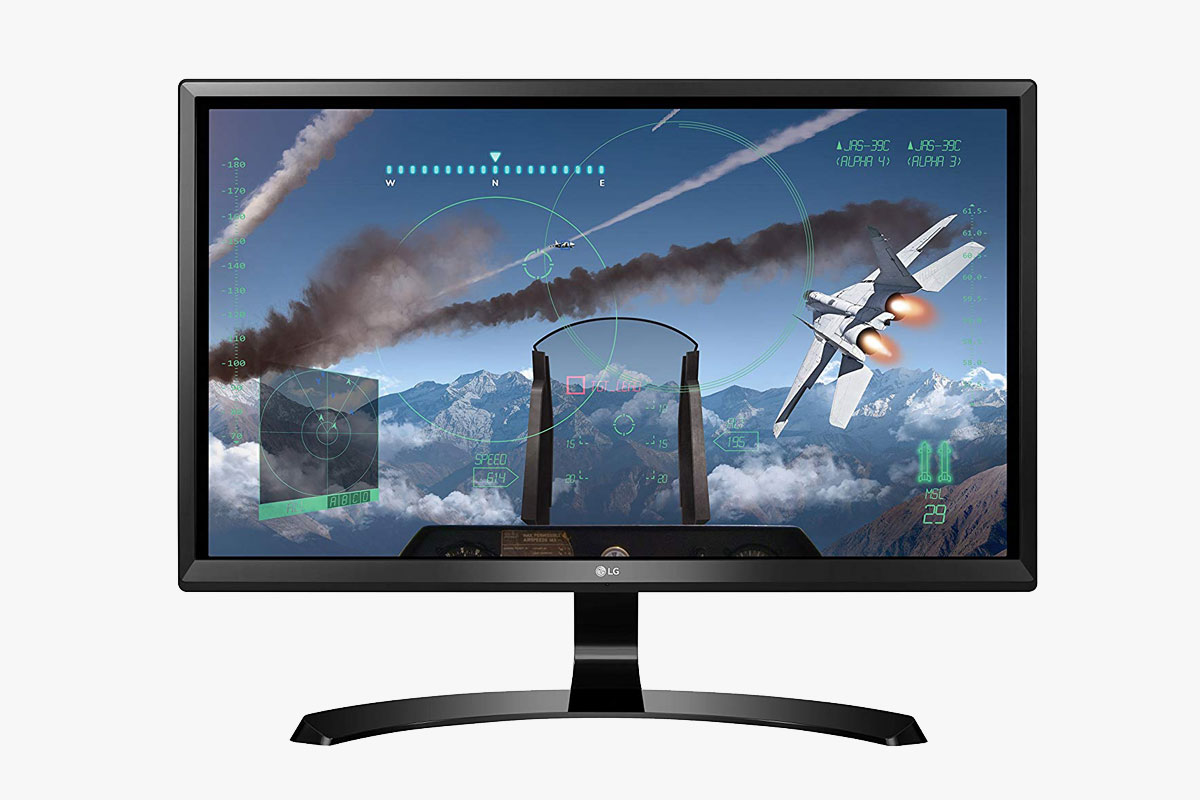 LG 24UD58-B
LG 24UD58-B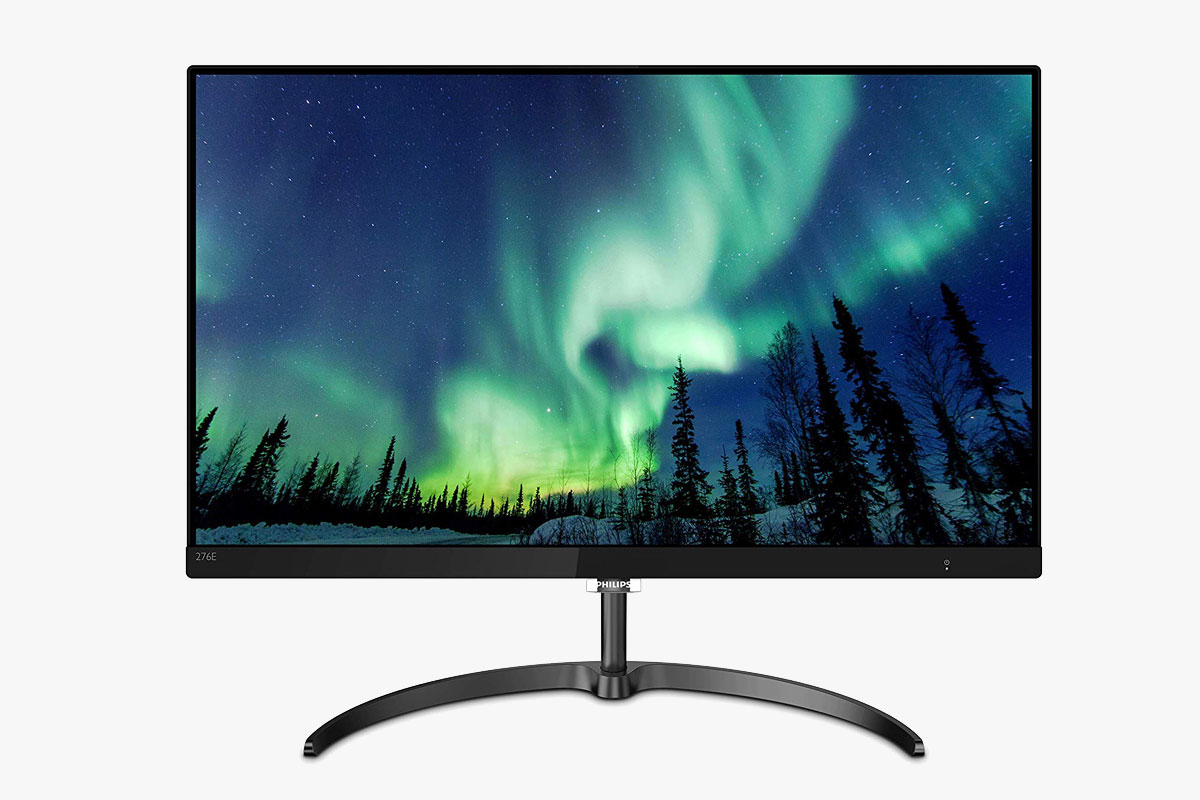 Philips 276E8VJSB
Philips 276E8VJSB Monoprice 34711
Monoprice 34711 Asus VP28UQG
Asus VP28UQG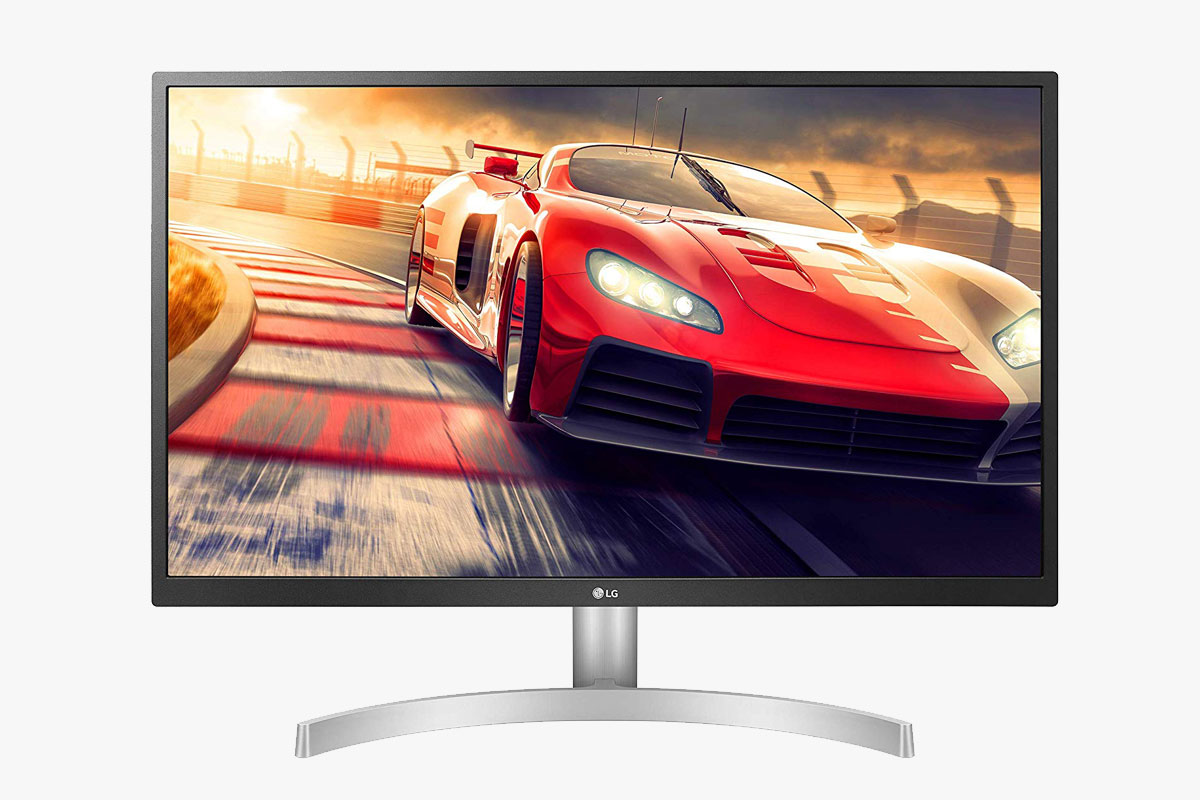 LG 27UL500-W
LG 27UL500-W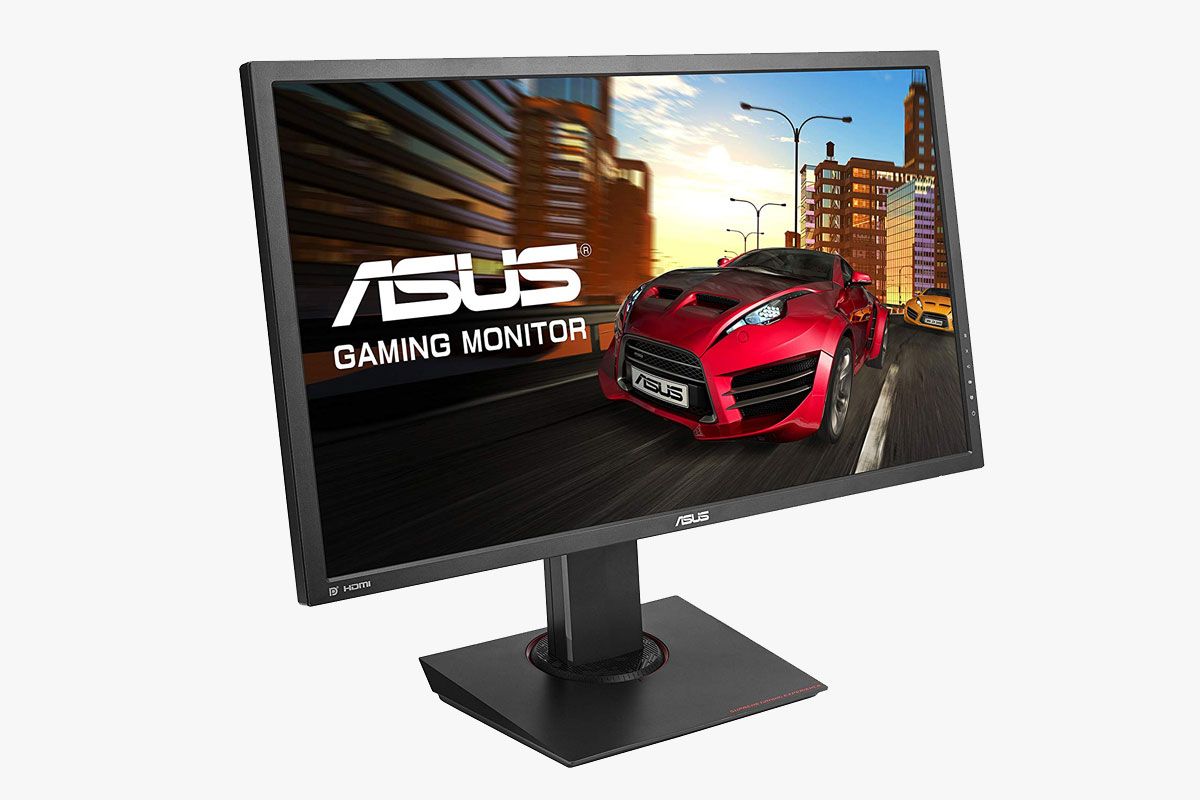 Asus MG28UQ
Asus MG28UQ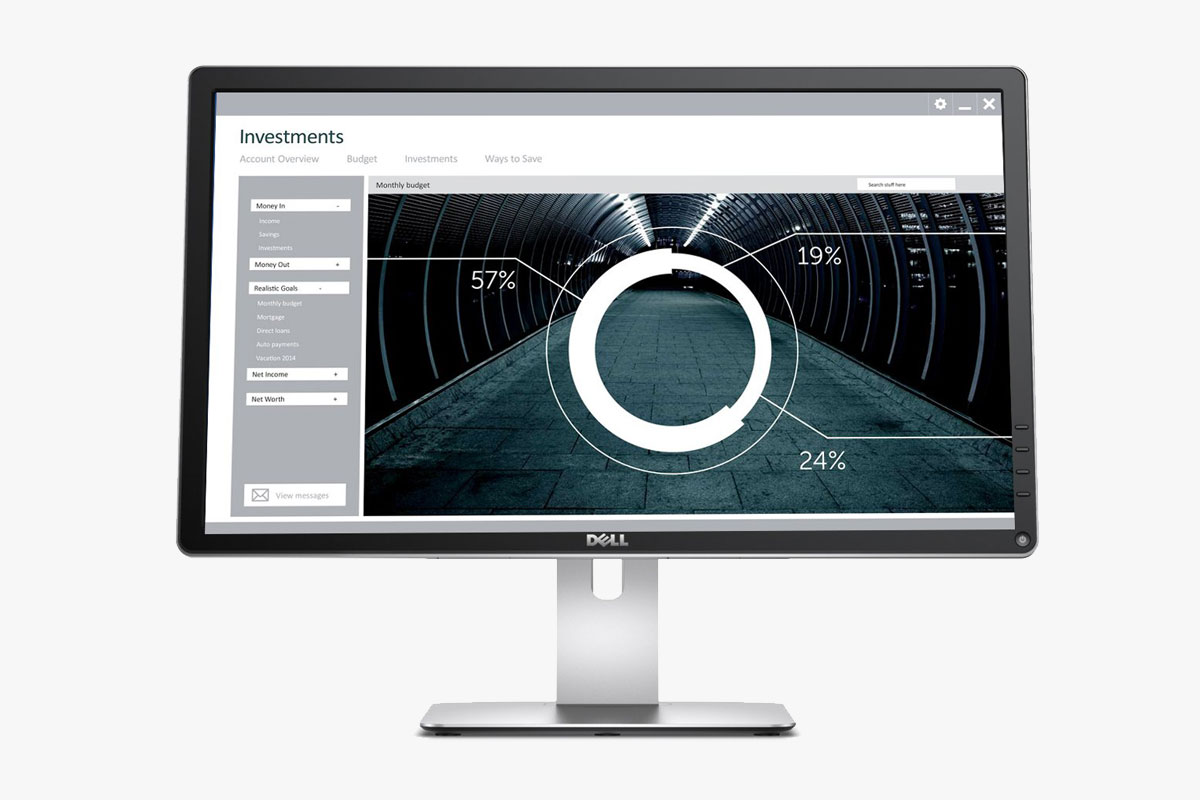 Dell P2415Q
Dell P2415Q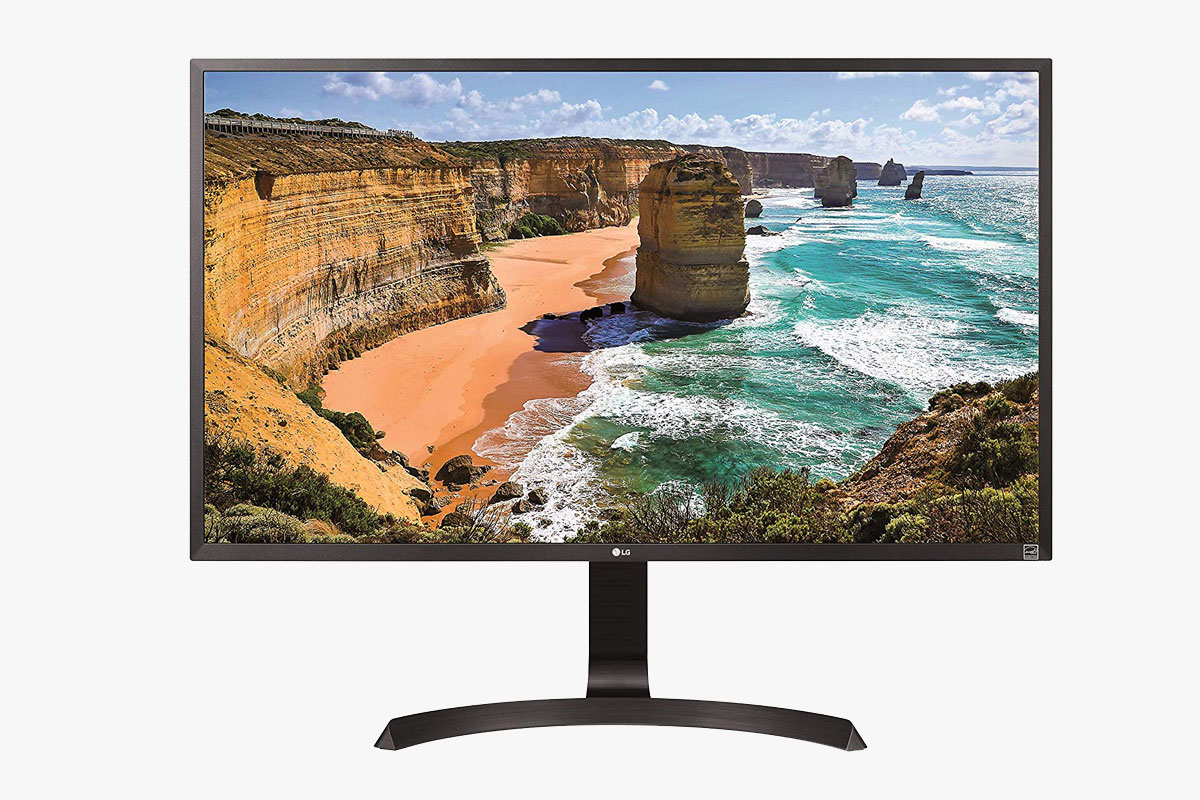 LG 32UD59-B
LG 32UD59-B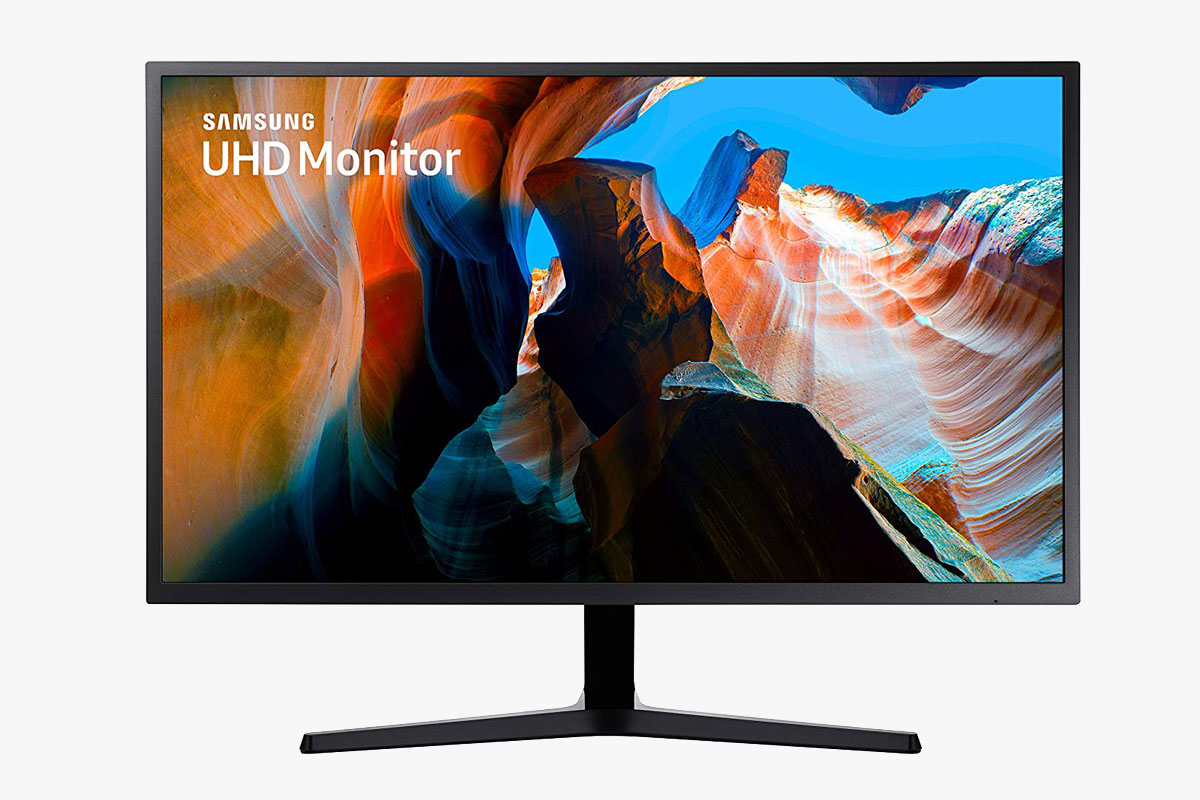 Samsung U32J590
Samsung U32J590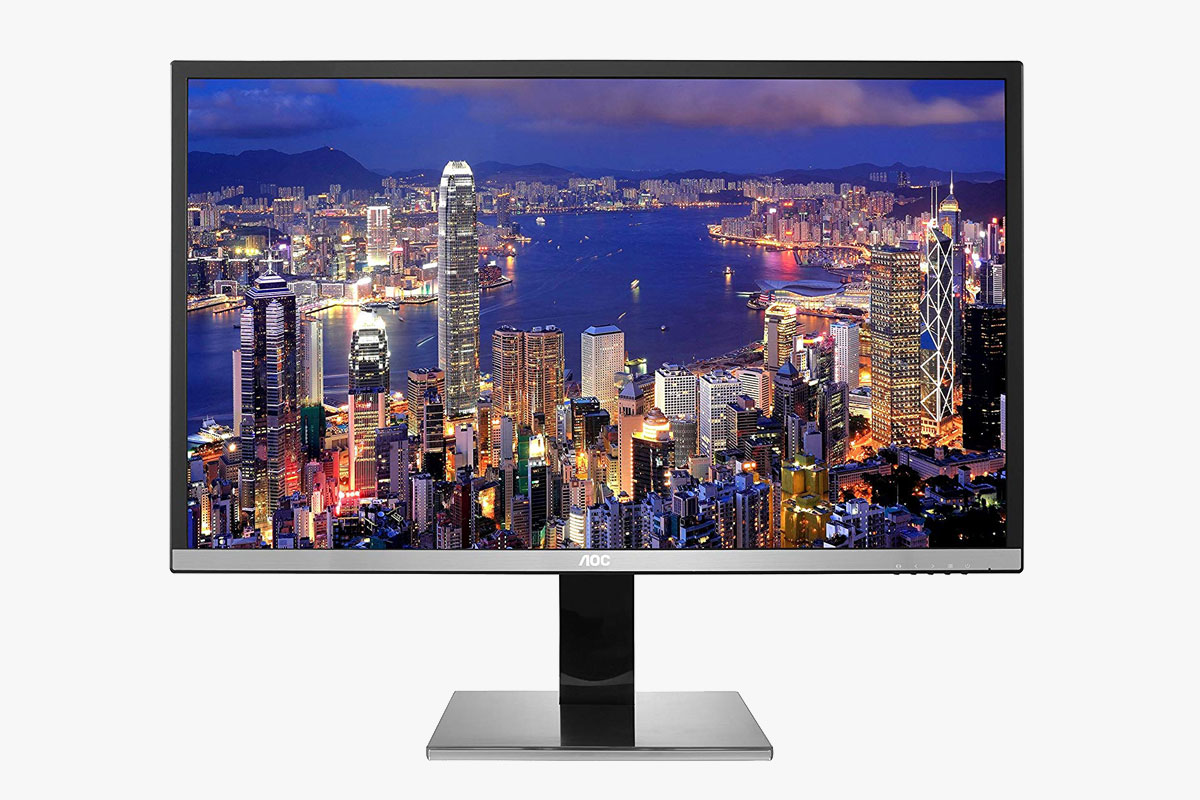 AOC U3277PWQU
AOC U3277PWQU
